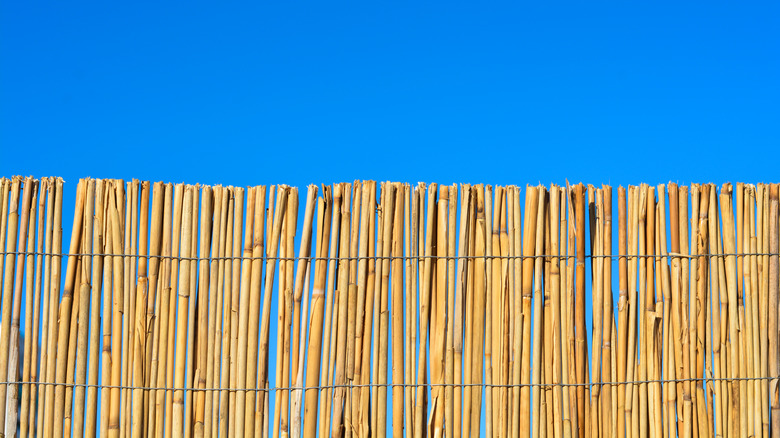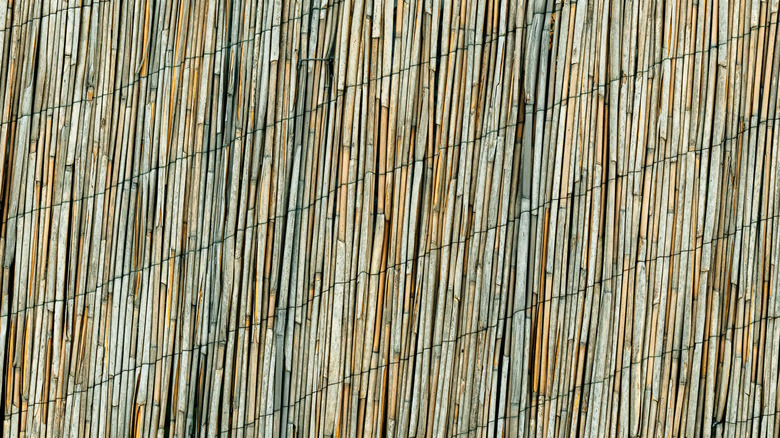The Affordable Bamboo Fence Alternative For Yards And Gardens
We may receive a commission on purchases made from links.
While bamboo fences are terrific at creating an easygoing vibe, they're not the most laid-back choice for maintenance. If you're weighing the pros and cons of installing a bamboo fence in your yard or garden, be sure to look at reed fences as well. You may have seen this type of fence before and assumed it was made of extra-thin pieces of bamboo. Like bamboo fences, reed fences tend to be sustainably produced and sport a natural, tropical look. Though they're strong like their bamboo counterparts, reed fences tend to have a lower price point. This makes them an affordable option for many homeowners, including first-time buyers.
If you have a large area to enclose, reed fencing may be the way to go since you can get lots of it for little money. Reed fences also tend to be easier to care for than bamboo ones. Bamboo fences typically need to be scrubbed with a brush and a special cleaning solution to remove dirt and grime, and then left alone to dry for two days. Reed fences need only a hose-down every now and then to ward off algae and mold. Both types of fences benefit from yearly sealing and waterproofing, which protect against rot and weather-related damage.
If you live somewhere that experiences extreme weather regularly, bamboo will be the better option because it's so durable. If that's not an issue, the desired height of your fence may be the deciding factor.
Choosing and installing a reed fence
Reed fencing is usually sold as rolled-up panels. In most cases, it's 6 feet tall and comes in several reed widths, all narrower than half an inch. The stalks are bound together with wire or twine. It's easy to shorten them, but building a taller fence is tough since you have to stack the reeds on top of one another. Bamboo, on the other hand, comes in a variety of heights, including 8 feet. If you need a fence that tall, it's the better choice.
Of course, 6 feet is high enough for many purposes, from increasing yard privacy to preventing rabbits from nibbling your lettuce plants. If you're placing reed fencing around a vegetable patch, consider attaching it to hardware cloth, such as Seboss 1/8-inch woven wire mesh. Dig a trench 12 to 18 inches deep, and place the bottom of the hardware cloth in it to keep groundhogs out of your garden.
Even if you're not shielding seedlings from animals, you'll need to affix your reed fencing to some type of structure. That's because it won't stay standing without support. Attaching it to a wooden frame or posts will work, or tether it to a chain-link fence, chicken wire, or plastic garden fencing. Inspect it regularly for pests, as you would to keep a bamboo fence looking like new, and remove them promptly if you find any. Both reeds and bamboo canes resist termites, though bees and other insects sometimes try to build homes in them. If you take excellent care of your reed fence, it can enhance your property for up to 20 years.

